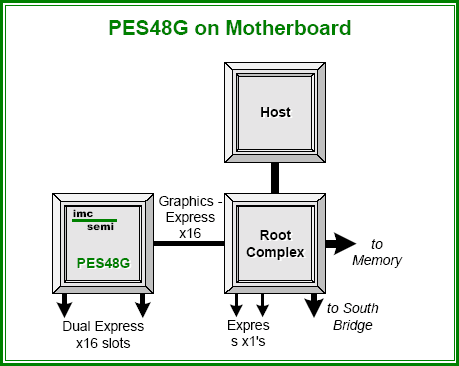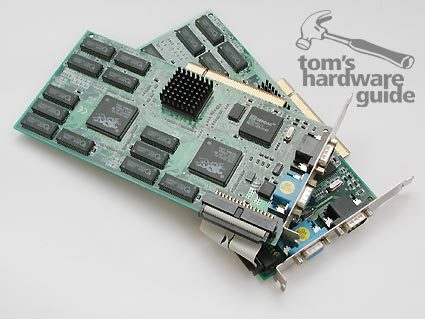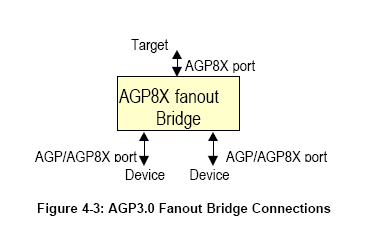Future Promise for Graphics: PCI Express
PCI Express - Possibilities, Possibilities
While we're gazing into the crystal ball, we might as well take a look at future computers. It's conceivable that we might see motherboards with two PCI Express x16 slots. That would open up the possibility of using two graphics cards in the same system, paving the way for four monitor setups. Switches for this kind of solution are already in the works.
IMC Semiconductor (http://www.imcsemi.com) offers a clever switch solution for PCI Express Graphics. Placed on a motherboard, a second slot is all you need to run two cards at full PCI Express Downstream performance.
Two cards, twice the speed? Sure, such a dual-card configuration could boost 3D performance, if the driver can distribute the work intelligently between the cards. The trouble is: the images rendered by the second card would need to take a detour through the system memory before being displayed. It seems doubtful that this would work fast enough, due to the inherent delays and latencies involved. Then again, maybe we will see solutions using direct connections between the cards, similar to the Voodoo 2 SLI setup at the dawn of 3D accelerators. After all, it worked very well then, why not today...?
Good old days. Will we see SLI solutions such as Voodoo2 SLI again?
There is another thing I'd like to say while we're on the topic of using multiple graphics cards in one system. It's a fairytale that there can be only one AGP slot on a motherboard. The AGP 3.0 specification allows for what's called a fanout bridge, which would allow a second AGP slot. So, two-card systems have been possible for quite a while now - sadly, they're just not being implemented. I wonder, is this for lack of demand or other reasons?
Dual-Slots solutions via AGP are not impossible as many people think. The AGP 3.0 specification provides the fanout bridge for this solution.
If you'd like to read up on the AGP spec, you can find more information here .
Get Tom's Hardware's best news and in-depth reviews, straight to your inbox.
Current page: PCI Express - Possibilities, Possibilities
Prev Page Future PCI Express And AGP Solutions Next Page PCI Express - Possibilities, Possibilities, Continued

